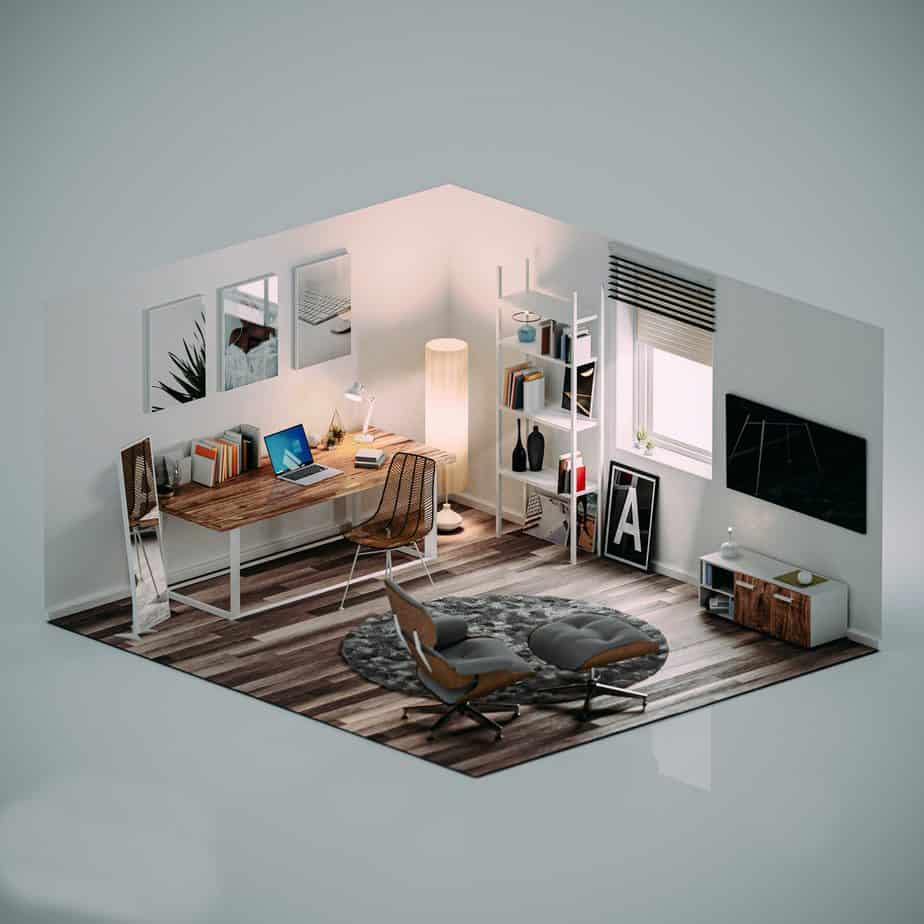2D/3D rendering involves creating a photorealistic or non-photorealistic image from a 2D or 3D model using software or a computer program. Rendering artists can earn a decent amount of money by offering 2D and 3D rendering services on freelance marketplaces and websites.
The article offers useful tips on how to be a successful freelance rendering designer and presents creative freelance rendering ideas, which can help new and experienced rendering artists to turn their skills into a profitable side hustle.
A typical 2D/3D rendering expert mostly performs the following activities:
- Create 3D architectural models.
- Produce virtual video tour videos.
- Develop and edit renderings, drawings, and photos.
- Produce 2D illustrations for presentations.
- Model different objects to create photorealistic renderings.
The services of 2D/3D rendering experts are required by different organizations and businesses including:
- Software companies and firms
- Architectural and engineering services firms
- Construction firms
- Real estate companies
- Consumer product manufacturers
- Industrial equipment manufacturers
- Aviation companies
Although there are plenty of full-time work opportunities for 2D/3D rendering specialists, civil engineers can also choose to work as freelance rendering designers full-time or adopt it as a side hustle to earn extra income on top of their primary job.
Tips On How to be a Successful Freelance Rendering Services Designer
Here are some tips to fast-track your career as a freelance rendering designer:
1. Skills
To become a successful 2D/3D rendering specialist, you need to have excellent creativity and imagination skills as you would be turning abstract and complex concepts into visuals. You also need to have excellent analytical and problem-solving skills as you’d have to deal with unique problems while working on different projects. While most of these soft skills come from experience, you would fare better in the field if you master the basics of 2D/3D rendering.
2. Software
2D/3D rendering specialists use software and computer programs to render photorealistic and non-photorealistic 2D and 3D models, so you must have advanced working knowledge of the commonly used rendering software. Organizations use a variety of software, depending on the products or services they offer, you need to develop a working knowledge of many popular computer programs, such as Maya, Adobe Photoshop, Adobe Illustrator, Modo, Cinema 4D, Blender, AutoCAD Civil 3D, and Autodesk Infraworks to increase your chances of getting hired and completing the project adequately.
3. Hardware
2D/3D rendering is a hardware-intensive task, so your hardware must be powerful enough to handle even the most demanding projects easily and quickly. You must have the following hardware at minimum to get going with rendering jobs, whereas hardware with higher specifications would certainly help.
a. Computer
While different rendering software recommends different hardware specifications, a PC with at least the following hardware specifications can be used for 2D/3D rendering projects:
- CPU (Single thread CPUMark Score of 2000 or higher)
- RAM (16 GBs or higher)
- Screen Resolution (1920 x 1080 pixels or higher)
- Graphics Card Memory (4 GBs or more)
- Graphics Card (GPU with a G3DMark score of above 7,000 with up-to-date drivers)
b. Tablet
There are plenty of options available for rendering professionals and graphic designers in the tablet market. You should consider a tablet with a high-end processor, GPU, and high-capacity RAM to draw graphics and do rendering tasks. Some tablets also come with a stylus pen that works at different pressure levels for marking different strokes to draw realistic and detailed sketches.
c. Electronic pencil for tablets/touch screen
You can also consider buying a drawing tablet without a screen. It can be connected to a PC, and you can use an electronic pencil or stylus to draw sketches on its screen. Again, you need to shop around the market and determine whether you need to buy one or you can settle for a regular tablet with a stylus pen.
d. Architectural Marker
An architectural marker lets you draw models, graphs, or structures on paper. Again, there are hundreds of brands and styles of architectural markers you will find on the market. You can buy the one that suits your style and type of work.
Architectural markers are perfect for rendering objects, textures, and light. They can be used to create 3D renderings. The versatility of these markers makes them a valuable tool in the creative world.
Architectural markers are a great choice for architects, whether they’re in their sketch phase or need to render a drawing. These artist-grade markers can be used with ease to create drawings of all types and styles.
Example of People Renderings done in Markers

4. Previous Work
You need to have a portfolio of the work you did previously to show it to your prospective clients. Your previous work would demonstrate your prowess in the field to your expected customers and also show your ability to handle projects of similar nature.
5. Learn
You must keep yourself updated about the latest technology in 2D/3D rendering. You need to be aware of and learn to use new software launched in the rendering and graphic industry. Continuous learning would ensure that you stay ahead of the competition and thrive in the industry.
6. Network
You need to start networking to build long-lasting working relationships with your clients and build a solid reputation for yourself in the rendering and graphic design industry. If you continue to deliver excellent services to your clients, they might recommend you to others in the industry, which can bring additional business for you.
Freelance Rendering Service Ideas
You can find numerous rendering projects on freelance marketplaces and send your proposal to the ones that interest you. Alternatively, you can learn the following specialized rendering tasks and start offering them on freelancing websites:
1. Floor plan rendering
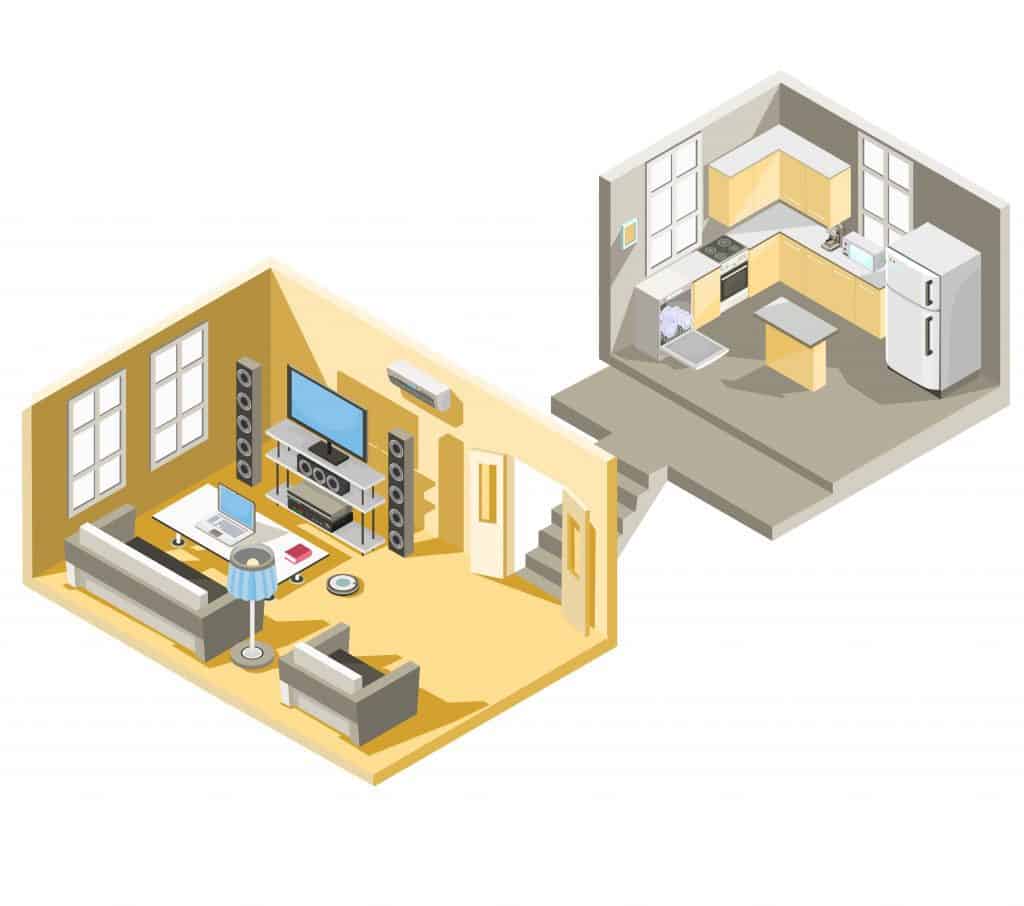
In this gig, you create 3D floor plans for different architectural and real estate projects. You can use either SketchUp, Lumion, AutoCAD, V-Ray, or Adobe Photoshop to render 3D floor plans. On average, you can expect to earn around $200 per project on this gig.
2. Rendering for design & building permit plans
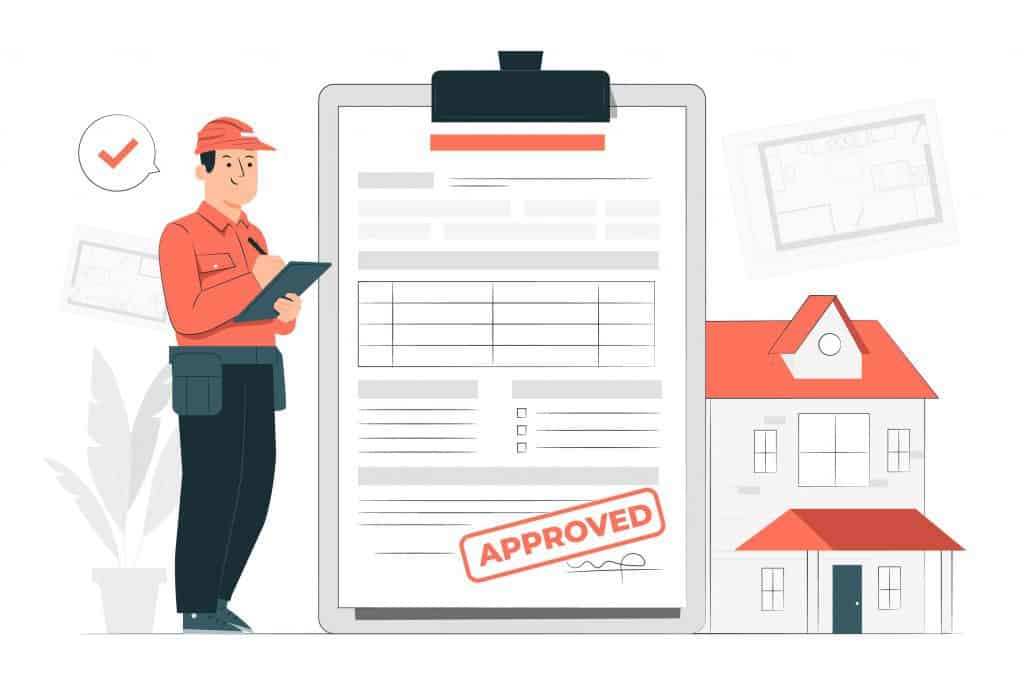
This gig involves creating 2D/3D rendering building permit plans for the construction of new buildings. Additionally, you can also offer modifications to an existing building plan in the gig as well. Architects, real estate agents, and construction firms can hire you for 3D-rendering building permit plans. The earning potential of this gig, on average, is more than $200 for a simple project to all the way up to $1,000 for complex projects.
3. 3D rendering house plans
You can offer 3D-rendering house plans similar to rendering building permit plans. This gig is targeted primarily towards individuals as this one involves the rendering of house plans. However, real estate agents and construction firms can also hire you for this gig. You can expect to earn around $200 on average per project on this gig.
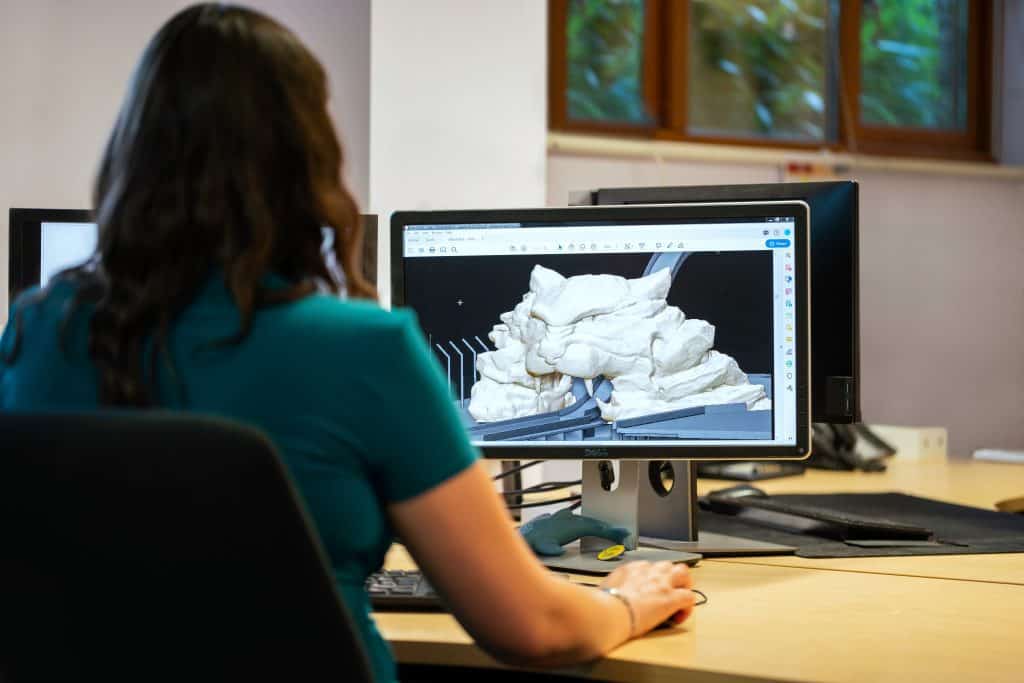
4. Panoramic renderings for real estate listings, Airbnb, luxury vacation rentals
In this gig, you offer a panoramic rendering of real estate listings, Airbnb, or any other luxury vacation rentals.

You can either do panoramic renderings of the real estate building plan or you can do a physical rendering of the listing using a camera or a video recording device. The average earnings per project on this gig is around $200.
5. Exterior renderings for architectural, renovation or landscaping business
This project involves a 3D rendering of exteriors for landscaping, garden designing, and renovating. Exterior renderings gigs are also in high demand as they can be marketed as a separate service from rendering the interior building plans.
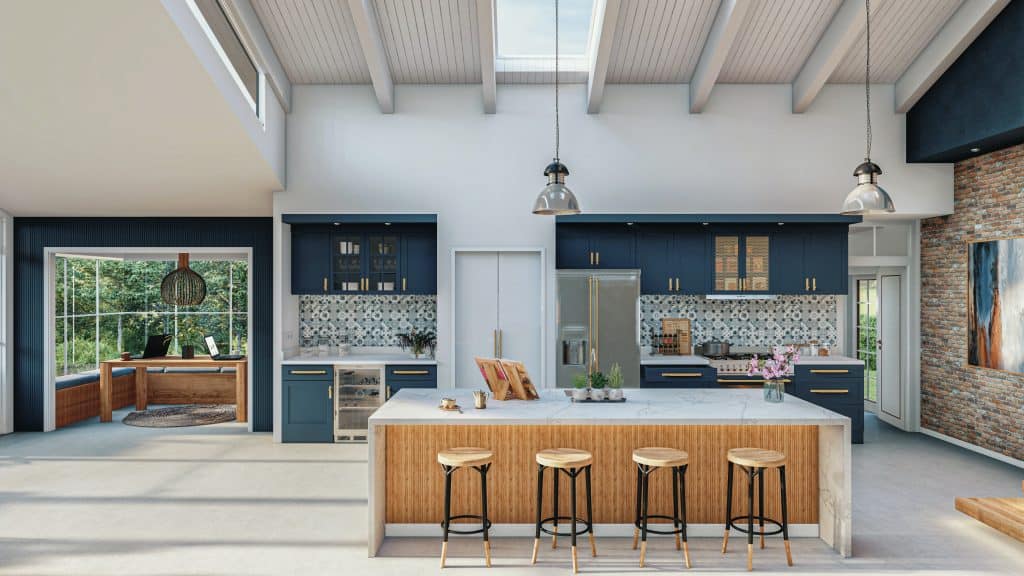
The project will take the form of a series of exterior renderings. Residential property is pictured at the top with a series of landscaping, garden designing, and renovating options below.
On average, you can get around $300 per project for this type of gig.
6. Product renderings for manufacturing new products
This project includes product renderings and mock-ups for manufacturing new products. The gig is used in advertisements for products as well as for making explainer videos to illustrate a process or demonstrate the use of a product.

This service has a huge demand, and you can expect to get around $100 for a simple project on average to upwards of $500 on projects of complex nature.
7. Teach photorealistic rendering techniques and ideas
If you are a 3D rendering expert, you can create a video course to teach photorealistic rendering techniques and ideas and sell the course on online learning platforms, such as Udemy and Coursera. Alternatively, you can sell your teaching services on an hourly basis on freelance platforms, such as Fiverr and Upwork. You can earn as high as $50 per hour by offering your services.
What are the advantages of Freelancing Rendering Services?
- 2D/3D rendering projects sell at a higher rate on freelance platforms. You can expect to earn $200 on each project of simple nature. Complex projects sell for a much higher rate.
- While providing rendering services to different real estate agents and architects, you can find profitable investment opportunities and invest your earnings from the projects on buying the properties.
- When you take on new rendering projects, you gain experience and sharpen your skills further, which enables you to impress clients and increase your earning potential.
- By working on numerous rendering projects, you get the opportunity to network with real estate agents, architects, and product manufacturers who buy your services. This can unlock many business opportunities and prospects for you.
Is Rendering Services for Everybody?
- Rendering tools are expensive and often involve recurring subscription charges.
- Due to stiff competition among sellers on freelance platforms, the average rate per project is on the decline as many sellers offer their services for less.
- Some real estate rendering services – such as panoramic renderings of real estate – require you to visit the place physically, which can be costly.
FAQs
Does 3D rendering require the same RAM and GPU as gaming?
3D rendering and gaming both are graphic-intensive and require high RAM and GPU. Broadly speaking, you can use a gaming PC to perform 3D rendering tasks adequately without any hiccups.
How much RAM do I need for 3D rendering?
You need to have a RAM of 16 GBs or more for carrying out 3D rendering tasks.
Which one is better for rendering: CPU or GPU?
While the CPU can take on some part of the rendering task along with the GPU, the latter is better at handling these tasks because of two reasons: GPUs do not take processing power from your PC. And they are specifically tuned for rendering faster.
Takeaways
If you are already into graphic designing and can use 3D modeling and rendering software, you can easily sell your skill on online freelancing platforms to make extra bucks on top of your primary earning job. Beginners can also learn the skills quickly just by their dedication and hard work.
